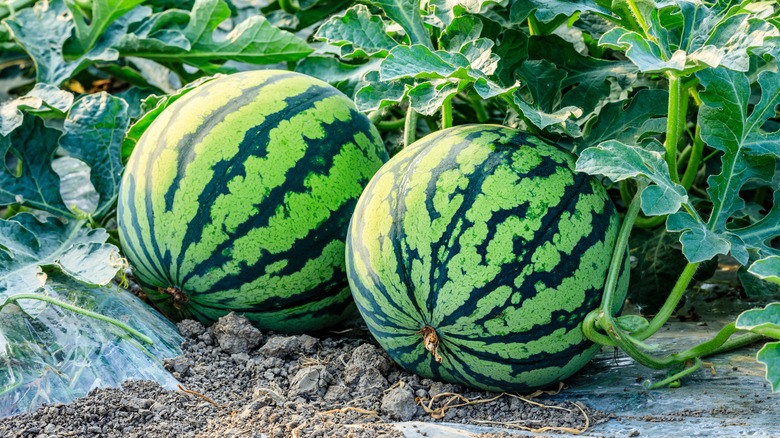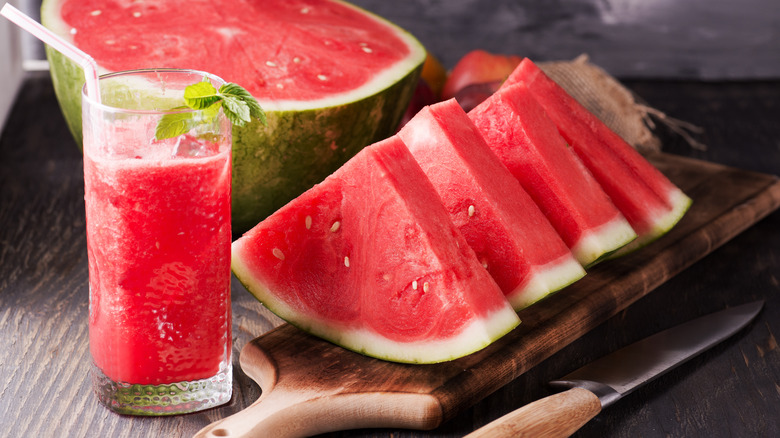How To Check The Firmness Of A Watermelon
Watermelons are one of the great pleasures of summer. People love to eat slices of watermelon as a snack, make juice out of it, put it in salads, or turn it into fun desserts. That first grocery store or farmer's market visit of the year when watermelon lovers see their favorite fruit is a magical moment, heralding the beginning of months spent outside in the sun.
As The Spruce Eats writes, however, not all watermelon on the shelf is created equal; many of the melons you'll see were picked too early or too late. How many of us know the pain of coming home with a seemingly gorgeous watermelon that we can't wait to slice into, only to find the interior too hard, too white, or perhaps even too mushy? It's a pain we want to avoid. Fortunately, there are ways to ensure you pick a great watermelon every time.
Trust your senses
According to The Spruce Eats, watermelon should be heavy, signifying that it's ripe and full of water when you pick it up. Healthline further states that a watermelon rind should remain firm when you press it; if not, it's probably too far gone. A further test is that if you scratch the rind with a fingernail, it shouldn't pierce the skin, per The Spruce Eats.
Southern Living writes that if your watermelon has a stem, it should be more brown than green, implying that the fruit's had time to ripen (if it's super green, it's probably been picked fairly recently and hasn't had much time). They also say that yellow portions of the rind indicate where the watermelon rested on the ground while it was growing (this is called the "ground spot"). If the ground spot is yellow, it means the melon probably grew to its full potential before being picked; if the ground spot is whiter, that could mean the watermelon is underripe.

